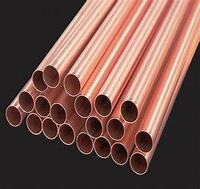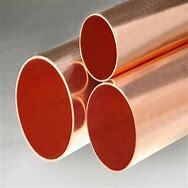1. Introduction
In the past 48 hours, global copper prices have surged past $9,800 per metric ton amid renewed industrial demand and supply chain constraints—making copper scrap more valuable than ever. If you’ve got old wiring, motors, or HVAC components lying around, stripping copper wire properly can significantly boost your return at the scrapyard. But how do you do it safely and efficiently without damaging the copper or risking injury?

Whether you’re salvaging from household electronics, air conditioning units, or industrial machinery, this step-by-step guide covers the best techniques to strip copper wire for scrap or recycling—plus tips on identifying high-value copper types like rod copper, copper strip, and copper tubing.
2. Why Proper Stripping Matters
Stripping copper wire isn’t just about removing plastic—it’s about preserving the metal’s purity and weight. Burning insulation (a common but dangerous shortcut) contaminates copper with carbon and toxins, slashing its scrap value by up to 40%. Clean, bare copper fetches top dollar, especially if it’s thick, unalloyed, and free of solder or steel.
Additionally, understanding related copper forms—like copper rod for welding, copper earth rod, or flat copper strip—helps you sort materials correctly. For example, a copper bonded ground rod or copper clad steel earth rod shouldn’t be mixed with pure copper scrap.
3. Tools and Safety Gear You’ll Need
- Wire strippers (manual or automatic)
- Utility knife (for thick cables)
- Heat gun (optional, for stubborn insulation)
- Safety gloves and goggles
- Workbench or stable surface
Never use open flames. Burning copper wire for scrap releases toxic fumes and ruins the metal’s resale value. Stick to mechanical or thermal (non-combustion) methods.

4. Step-by-Step: Best Ways to Strip Copper Wire
4.1. Manual Stripping for Small Jobs
For household wiring or short lengths, manual wire strippers are ideal. Choose strippers sized for your wire gauge—most handle 10–18 AWG easily. Cut a small slit in the insulation, then twist and pull it off. Avoid nicking the copper inside; deep cuts reduce conductivity and scrap grade.
For thick cables (like those from AC units), use a utility knife to score the outer jacket lengthwise, then peel it back like a banana. Remove inner insulation from individual strands carefully.
4.2. Mechanical Stripping for Bulk Recycling
If you’re stripping wire for scrap regularly, invest in a motorized copper wire stripper. These machines feed wire through rotating blades that cleanly remove insulation at speeds up to 100 feet per minute. Look for models that handle both solid and stranded wire.
Pro tip: Sort wires by type first. THHN, Romex, and coaxial cables require different settings. Never feed aluminum or copper-clad aluminum into a copper-only stripper—it contaminates your batch.

4.3. Heat Gun Method (For Sticky or Aged Insulation)
Older insulation can become brittle or fused to the copper. A heat gun (set to 200–250°F) softens PVC or rubber jackets without burning. Gently pull the insulation off once pliable. This is safer than torches and preserves copper integrity.
5. What to Do With the Stripped Copper
Once stripped, separate your copper into categories:
- Bare bright copper (clean, uncoated, >16 AWG): highest value
- #1 copper (clean pipe, bus bar, or rod copper with minor tarnish)
- #2 copper (tinned, soldered, or mixed with brass fittings)
Don’t forget other recoverable copper forms: copper round bar from machinery, copper strip from transformers, or even copper pipe from old aircon copper tube systems. A copper earth strip 25x3mm or flat copper strip may be worth more as-is than melted down.
Avoid mixing copper with copper bonded steel or copper clad ground rod—these contain steel cores and are priced lower. Similarly, beryllium copper strip or nickel plated copper strip should be kept separate due to alloy content.
6. Common Mistakes to Avoid
- Burning insulation: illegal in many areas and destroys value
- Using dull blades: causes nicks and reduces copper weight
- Mixing copper types: lowers overall scrap grade
- Ignoring local regulations: some scrapyards require ID or limit quantities
Also, never strip live wires. Always confirm circuits are de-energized before handling.
7. Maximizing Profit: Know Your Copper Prices
Check real-time copper rod price and copper strip price trends before selling. Pure copper bars, copper ingot, or flexible copper bus bar often fetch premiums. If you have copper tubing from HVAC work—like 15mm copper pipe or 22mm copper tube—clean it thoroughly; air conditioner copper pipe price remains strong due to refrigerant line demand.
For quick reference, search ‘copper strip near me’ or ‘copper bars for sale’ to compare local scrap yard rates. Some even offer better prices for pre-sorted, stripped wire.
8. Conclusion
Stripping copper wire properly isn’t just about effort—it’s about strategy. By using the right tools, avoiding fire, and sorting materials accurately (from copper welding rod to copper strip roll), you protect both your health and your wallet. With copper prices climbing, now’s the perfect time to recycle smartly and turn old wires into real cash.
Our Website founded on October 17, 2012, is a high-tech enterprise committed to the research and development, production, processing, sales and technical services of ceramic relative materials such as How. Our products includes but not limited to Boron Carbide Ceramic Products, Boron Nitride Ceramic Products, Silicon Carbide Ceramic Products, Silicon Nitride Ceramic Products, Zirconium Dioxide Ceramic Products, etc. If you are interested, please feel free to contact us.

